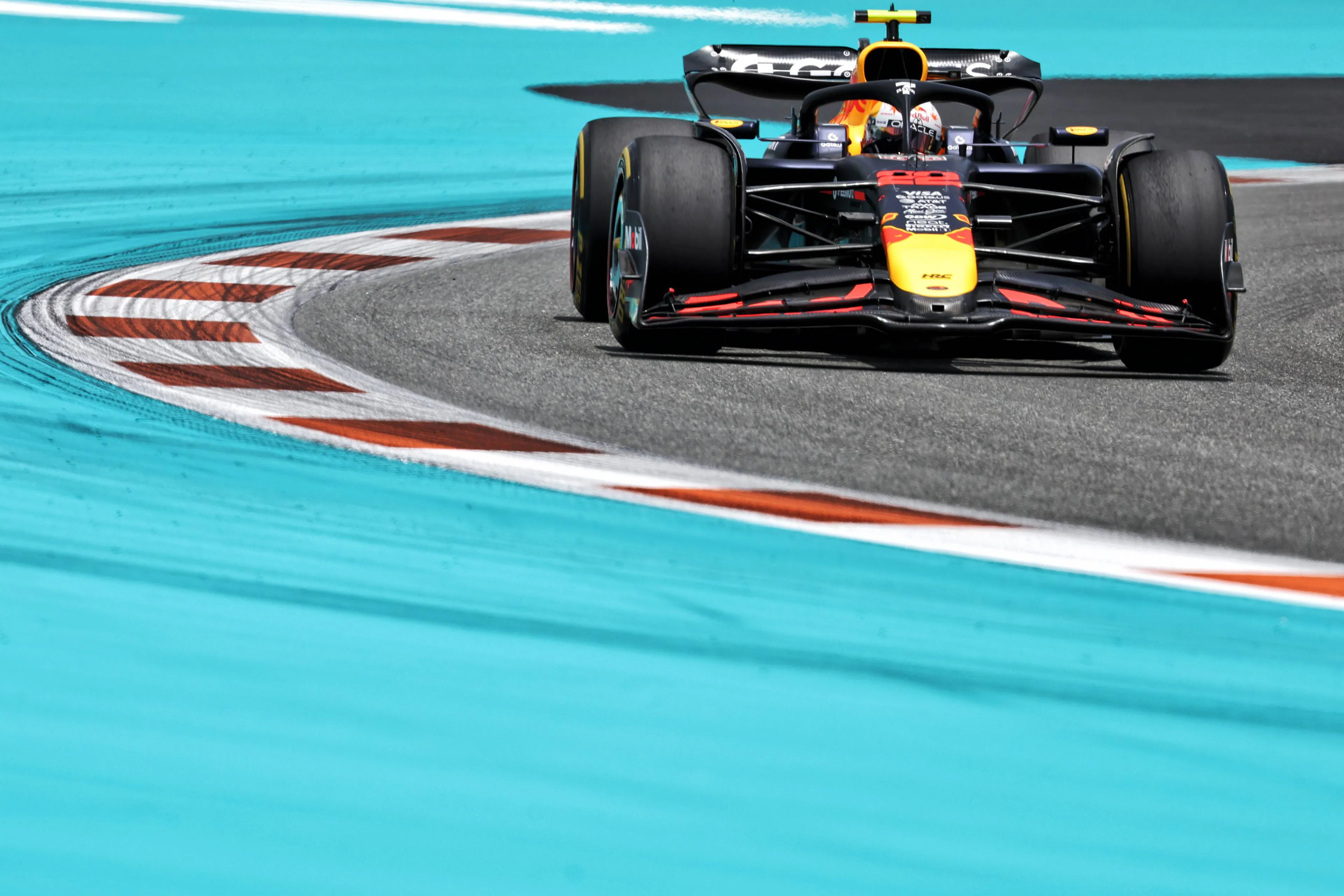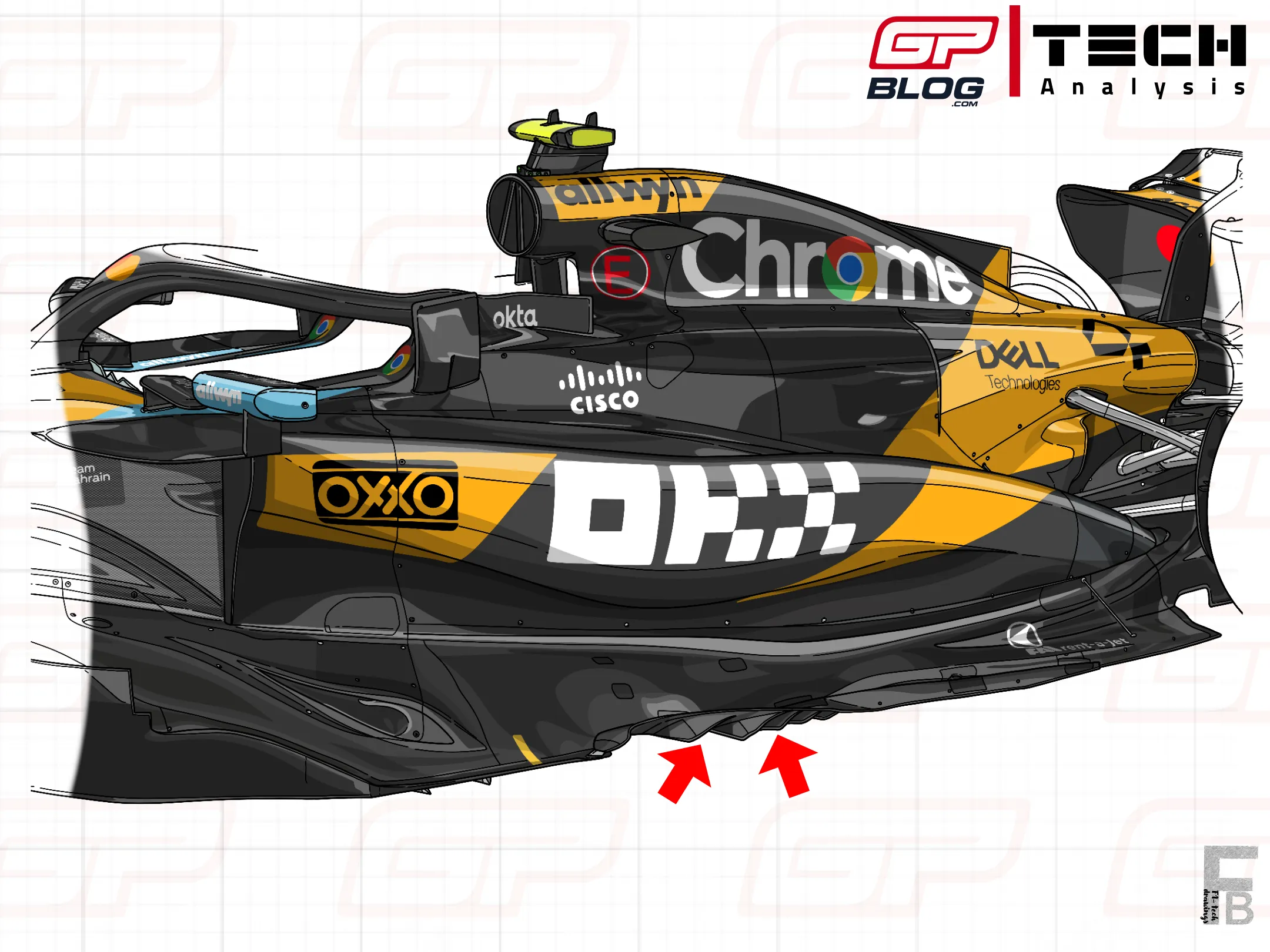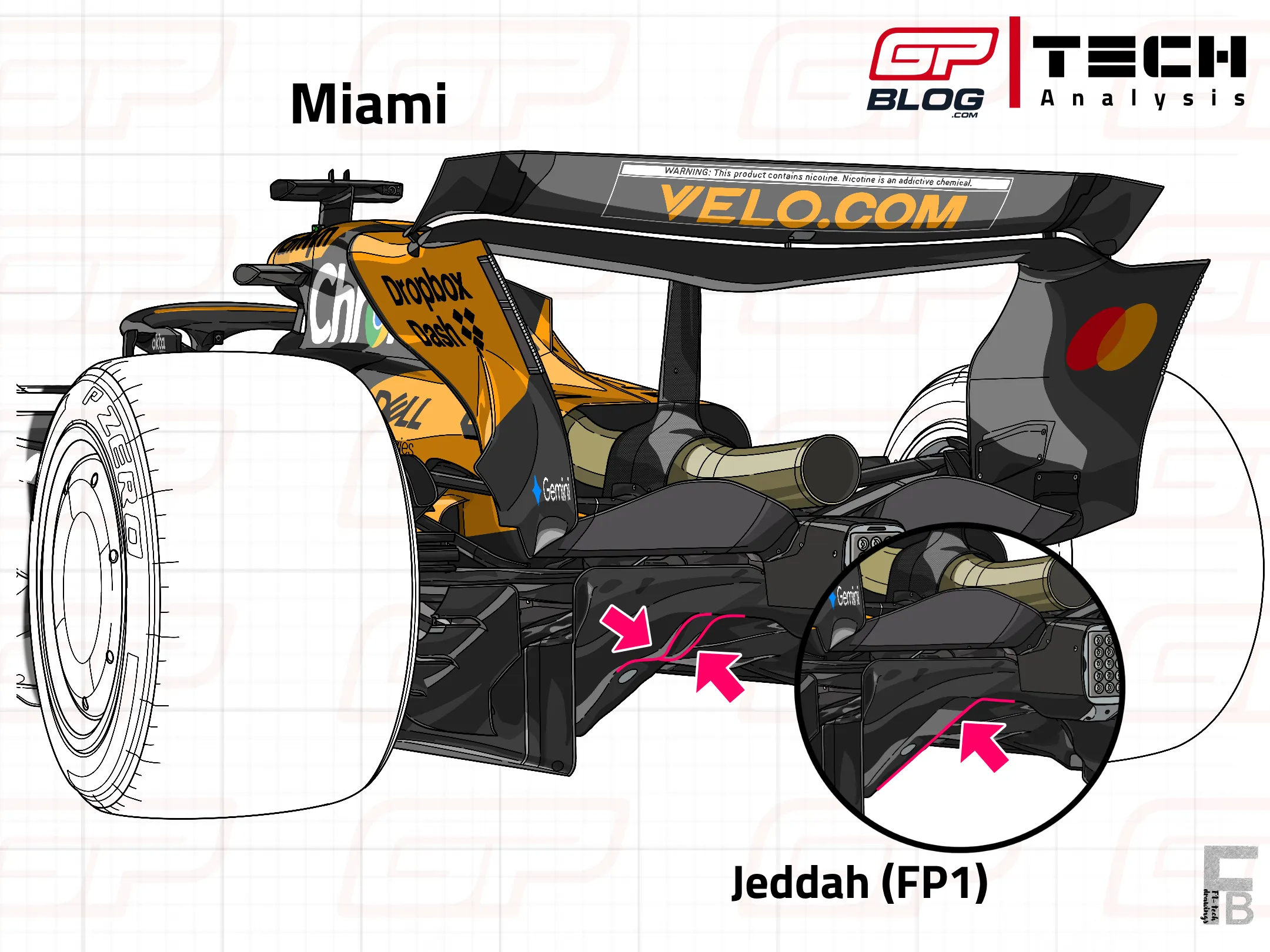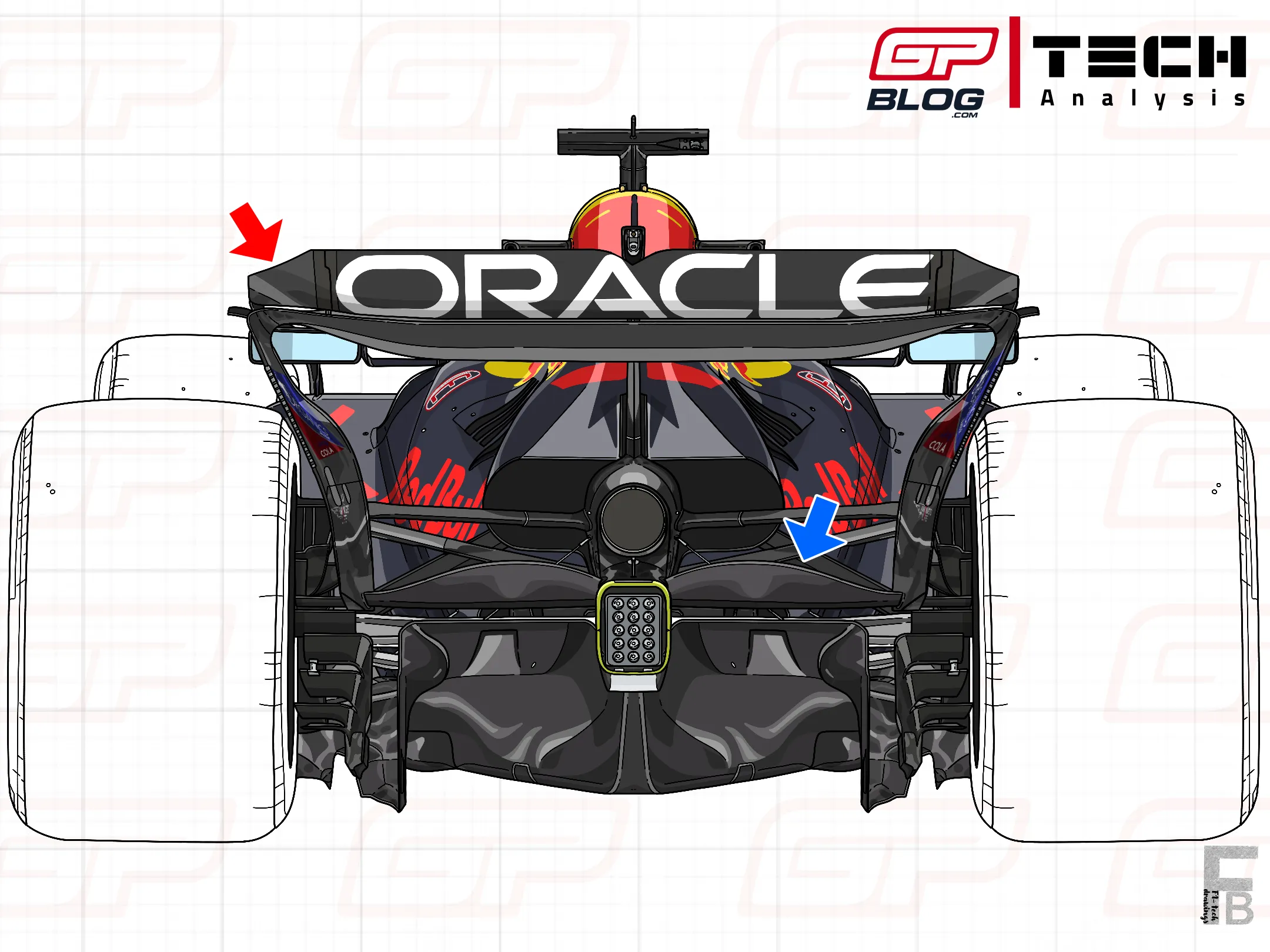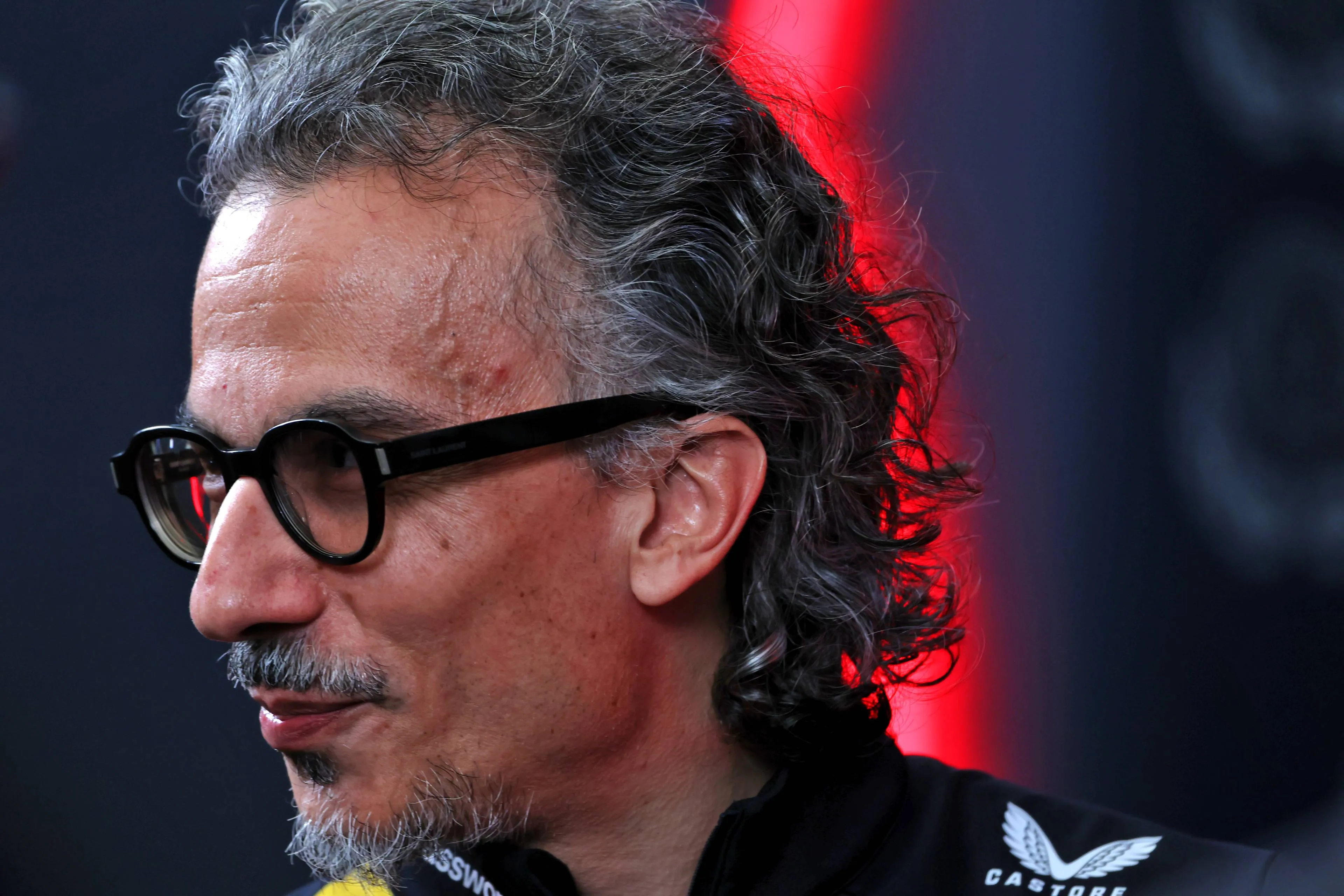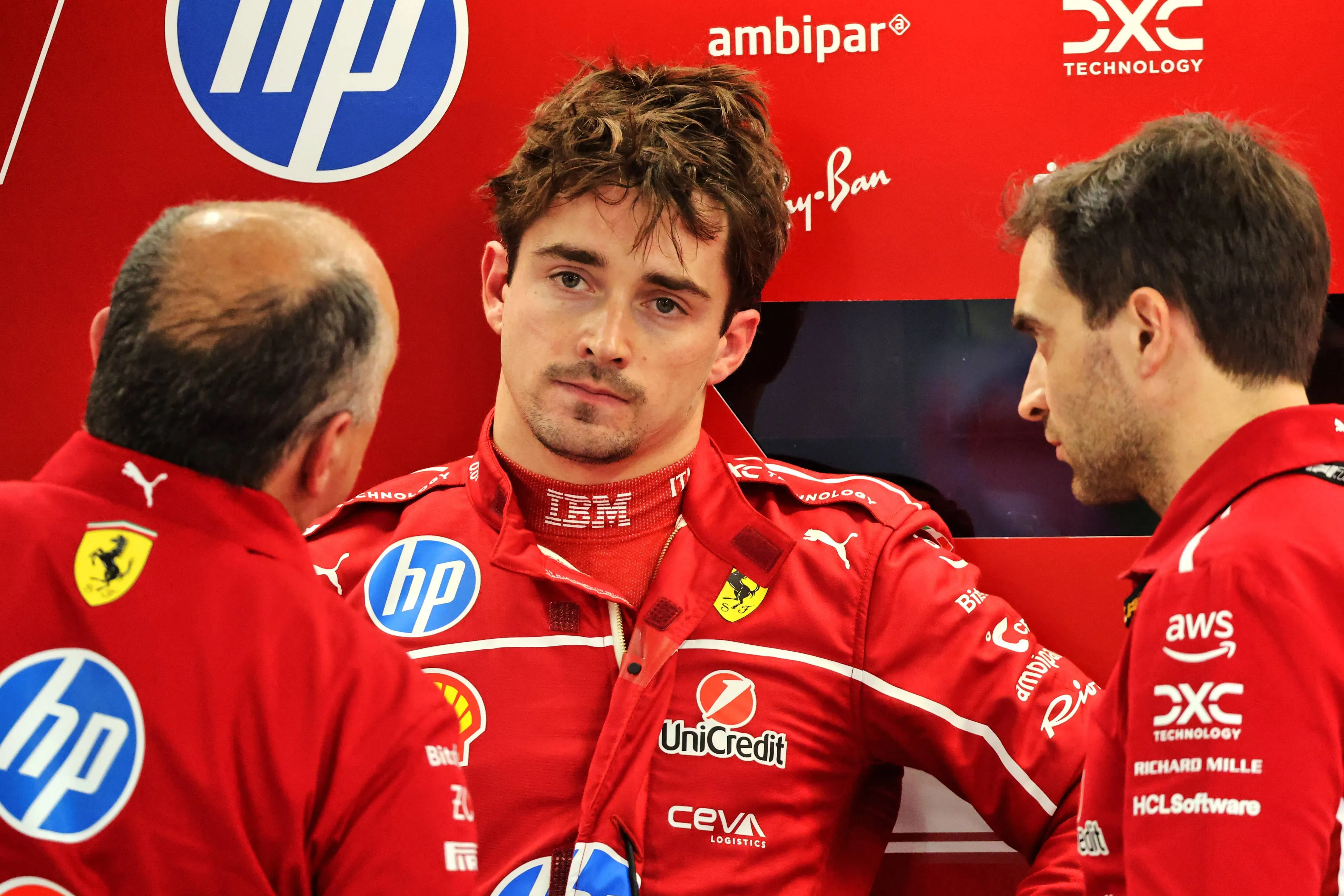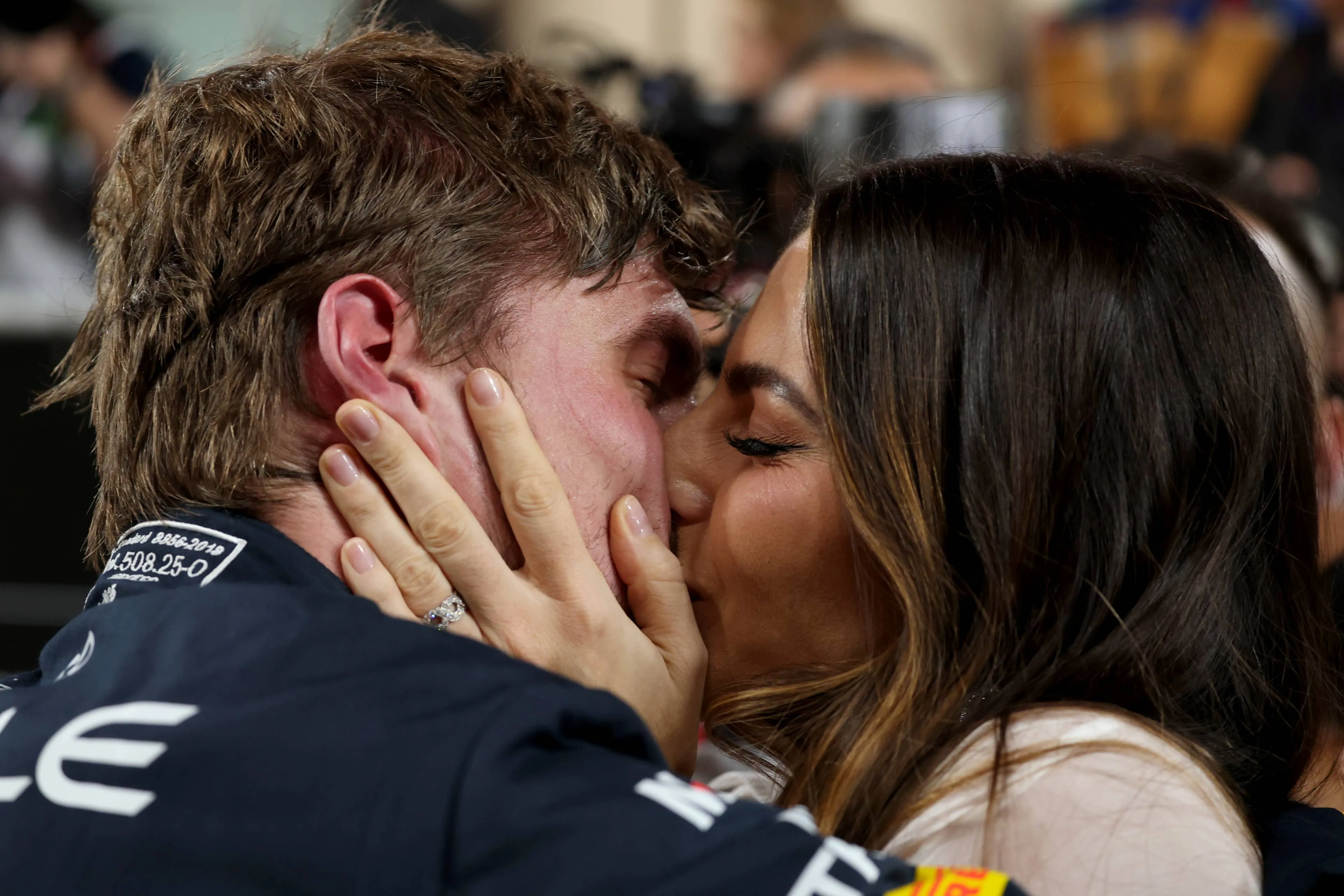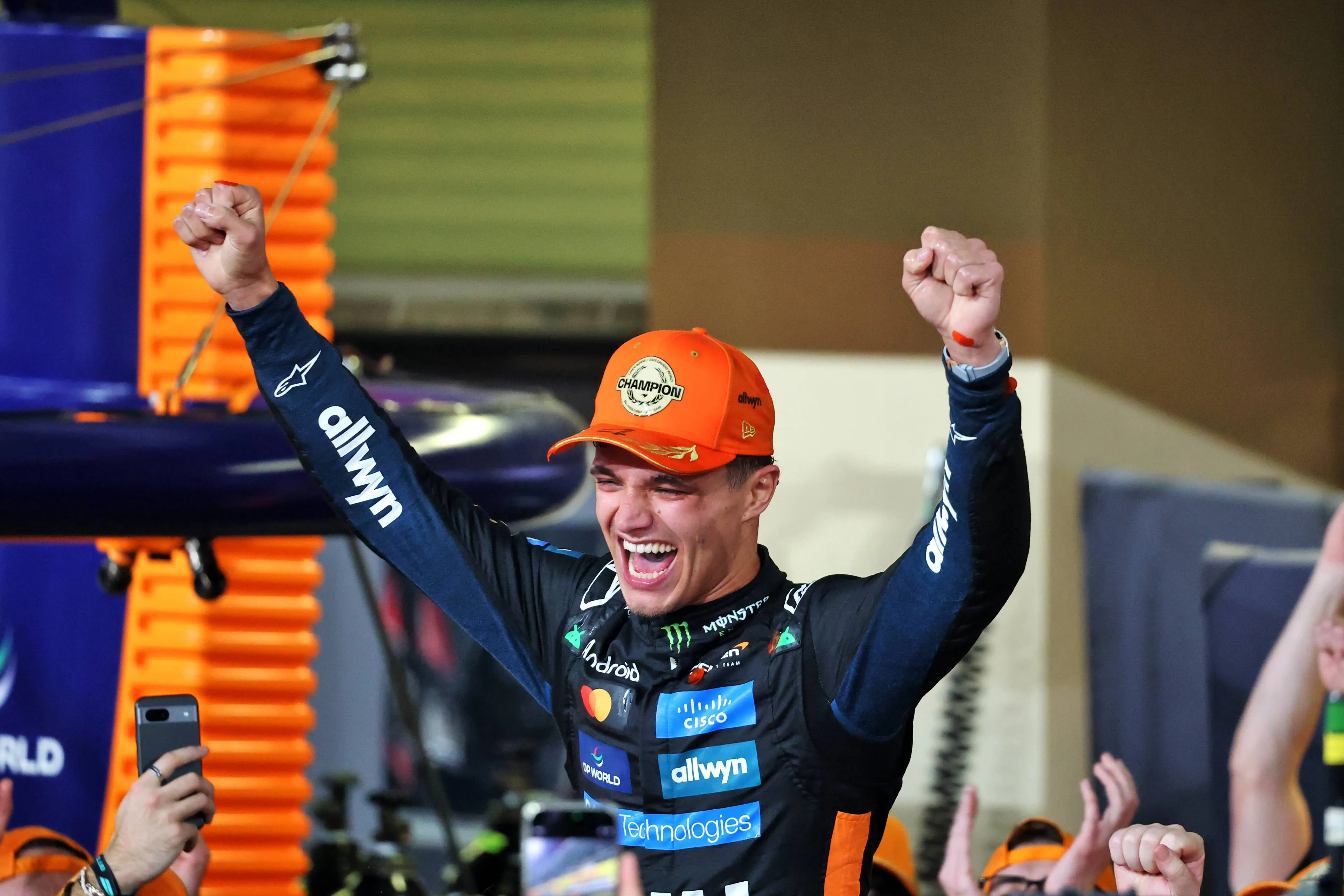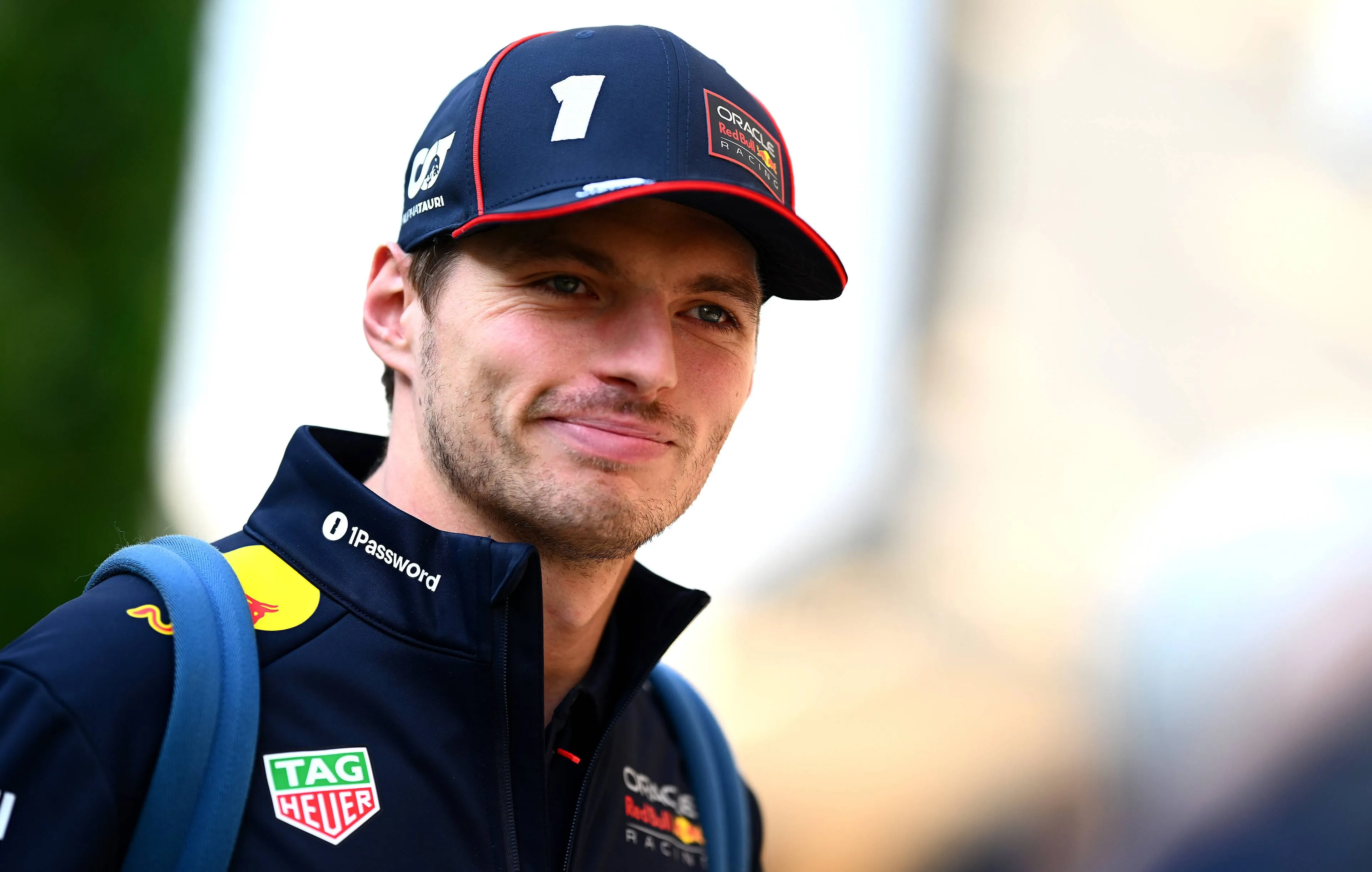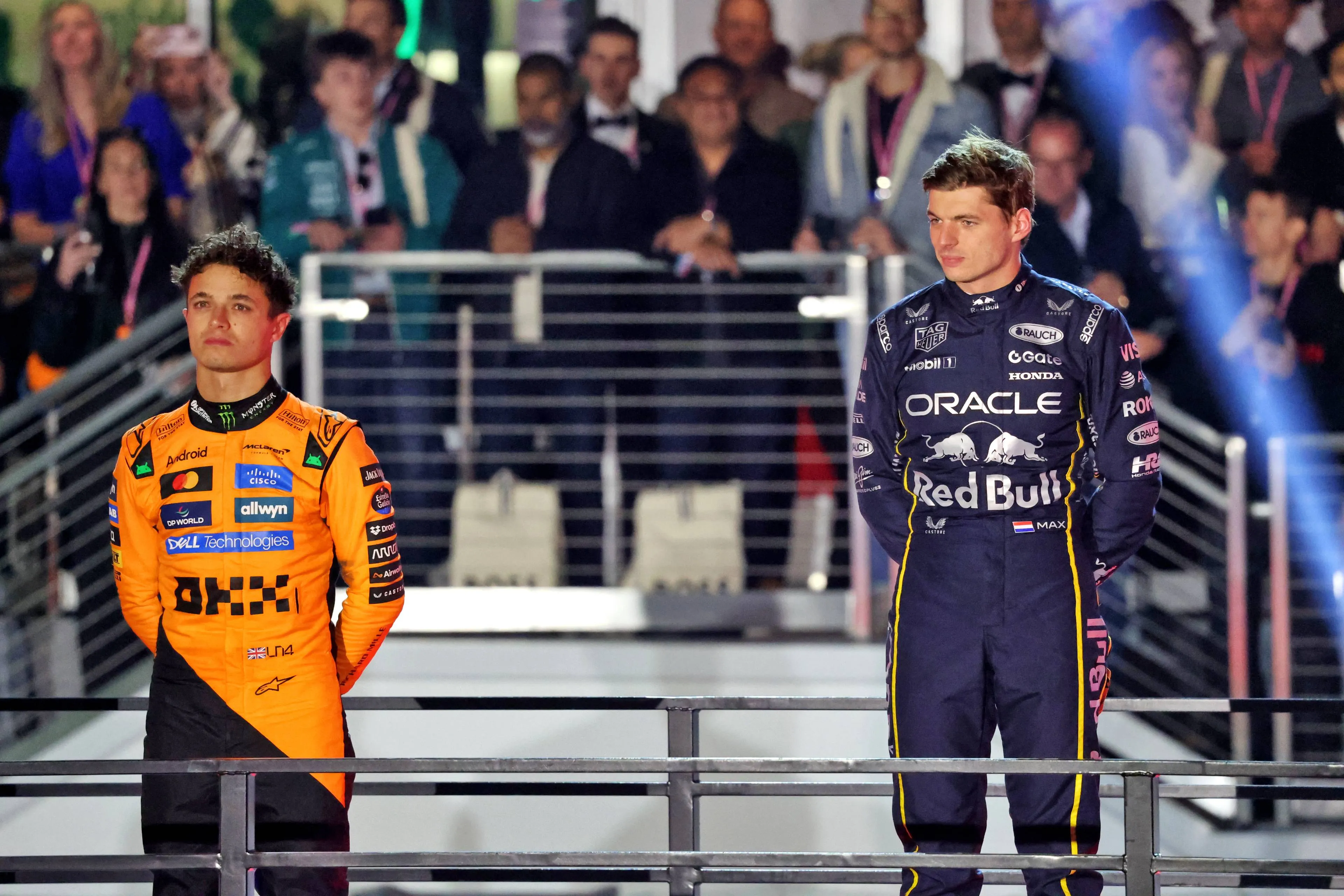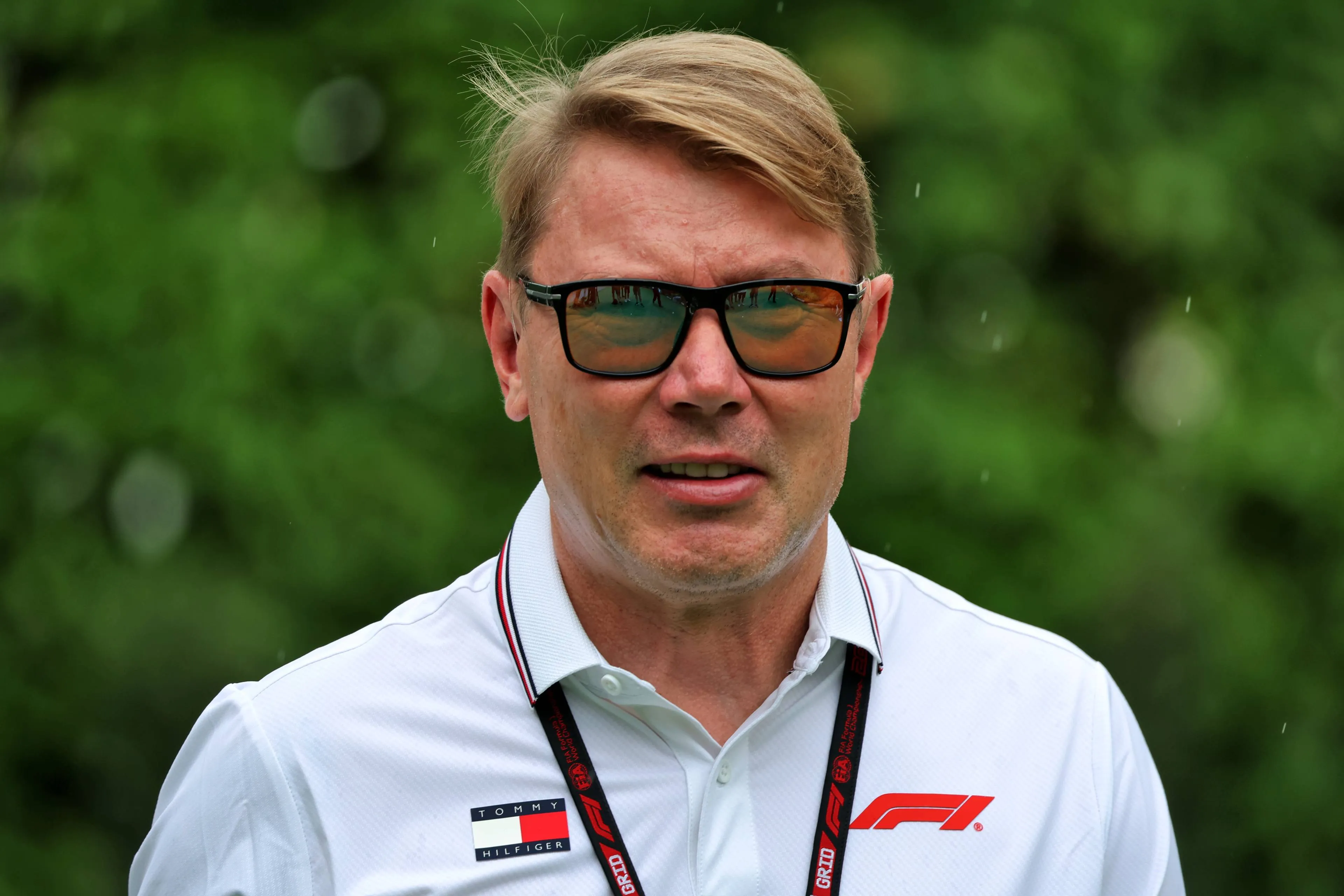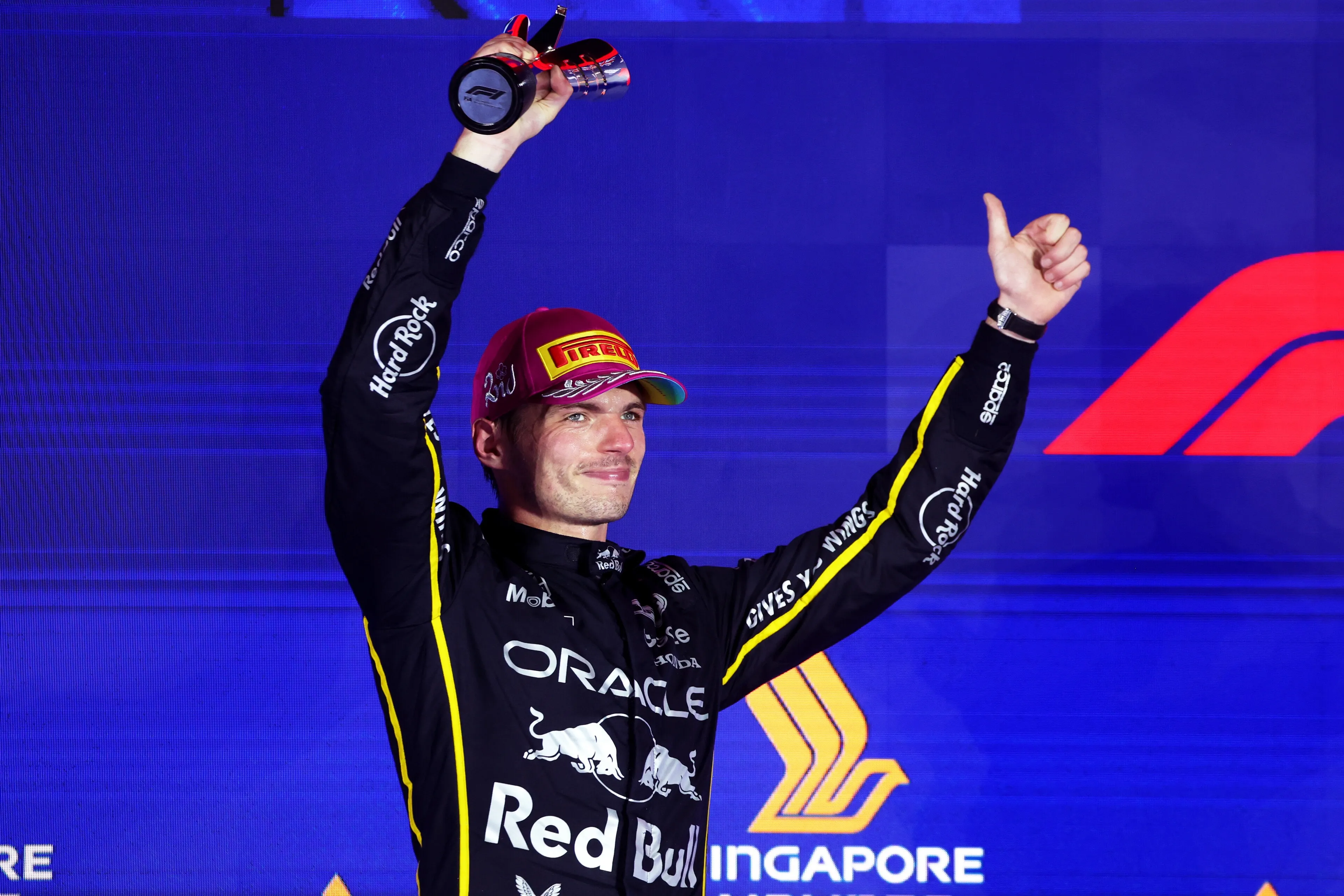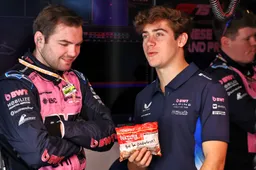F1 Tech | Why the RB21's new floor isn't enough to challenge McLaren
18:00, 09 May
Updated: 19:22, 09 May
2 Comments
At the Miami Grand Prix weekend, Max Verstappen was able to take pole position on Saturday, but lacked the pace to convert it into a victory on Sunday. The team also brought a new floor last weekend, but did it really improve the performance of the car? Let’s try to find it out.
Despite the Sprint format, Red Bull decided to bring an updated floor to Miami, which was fit only on Verstappen’s car. The main changes concerned the floor fences (the Venturi inlet) and the floor edge.
For what concerns the floor fence, only one of the four elements has been changed and it is the innermost one. As shown by the yellow arrow in the drawing below, the inner fence now has a more squared and pointed shape compared to the version used by Tsunoda, which had a more curved shape. The blue arrows also show how the new element has a smaller surface area compared to the previous version, which was a little bigger.
This new component aims at diverting the flow differently inside the Venturi channels. This advanced portion, in fact, is a high-pressure area that has the goal of pushing the turbulence of the front wheel outwards, preventing it from being sucked into the channels and affecting the flow directed towards the diffuser.
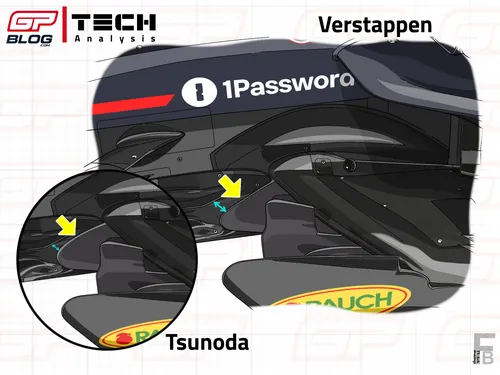
RB21 new floor fence only adopted on Verstappen's car
Another important change concerned the floor edge: Verstappen used a slightly updated version of the floor he had in Melbourne and Shanghai (before switching back to the “launch version” floor from Suzuka), while Tsunoda kept using the “launch version” floor.
The two specs differ for the last vortex generator, which is sharper and has a similar shape to the ones placed in front, and for the raised lower lip of the floor edge wing, placed immediately adjacent to the new vortex generator just described (red arrows).
It’s quite interesting to see that this floor edge has been adopted together with the new floor fence, proof that these new components work great in synergy, increasing the downforce produced by the floor not only at high speed, but in all kind of corners.
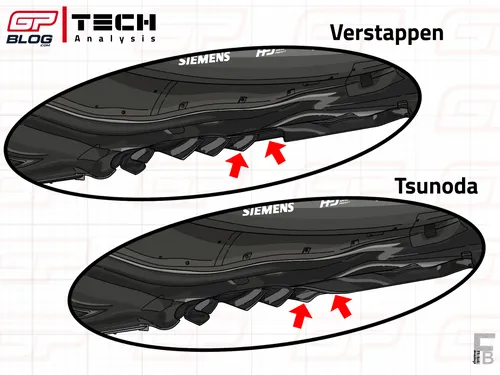
RB21's floor edge comparison Verstappen vs. Tsunoda
This aspect was underlined by Red Bull Chief Engineer Paul Monaghan on Friday, who pointed out: “It will get us at the majority of them [corners]. It can go on, and it'll give us a few kilos of load, and we shall enjoy the benefits.”
Read also
Verstappen struggles on Friday solved by overnight work
These new components didn’t immediately seem to work on Verstappen’s car, who struggled a lot with understeer in the slow speed both during Friday’s FP1 and during the Sprint qualifying, where he eventually finished fourth.
The updated RB21 looked extremely competitive through the first sector, where the stiff suspension set-up and the high-speed corners allowed Verstappen to show the car’s full potential in that section, setting purple sector after purple sector. However, as soon as he entered the slow-speed section, his rear tyres started to overheat and lost grip as a consequence.
The exact same issue appeared during the Sprint on Saturday: the wet condition seemed to help the RB21, but as soon as the track started to dry, intermediate tyres began sliding and consequently overheating, making Verstappen losing tons of lap time compared to the two McLaren in front.
Conscious that the overheating issues for Sunday’s race were impossible to solve just by adjusting the set-up, the team decided to go all-in on qualifying, hoping that the clean air in front would have helped them manage the tyre temperature.
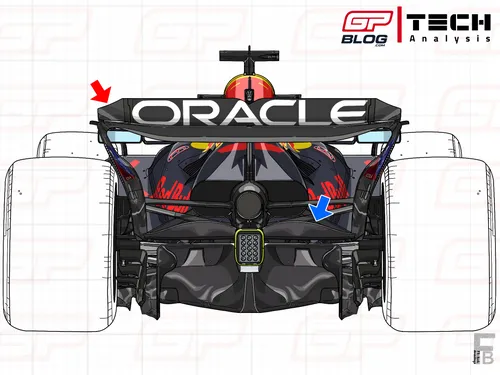
Red Bull's low downforce rear and beam wing to privilege qualifying
Thus, Red Bull Racing engineers decided to exploit their strength on the Miami International Autodrome: they lowered the car and gave Verstappen a strong front end, to be as quick as possible trough the first sector, where the RB21 was the quickest.
That’s exactly what happened: Verstappen gained so much time on the two McLaren in the first sector that, despite their incredible performance in the slow-speed section (thanks to the softer mechanical set-up, as explained here), weren’t able to catch up over the rest of the lap, allowing the Dutch driver to grab pole for the main race.
In the usual post qualifying interview, in fact, Verstappen praised the team’s work to improve the rotation of the car, highlighting it as the key aspect that allowed him to make the difference: “I think we improved the car a tiny amount as well, which helped me to basically rotate it a bit better. I mean, we are still struggling a little bit with our limitations in the car, but I do think that we've been quite decent over a lap.”
“I think we improved the car a tiny amount as well, which helped me to basically rotate it a bit better. I mean, we are still struggling a little bit with our limitations in the car, but I do think that we've been quite decent over a lap.”- Max Verstappen
Despite this great performance, he knew that keeping the two McLaren behind on Sunday would have been much more difficult, especially due to the hot temperature: “Of course, the long run is a different story. The tyres get really hot around here.”
As predicted, in fact, the hotter conditions and the higher tarmac temperature compared to Saturday made the RB21 suffer from overheating just a few laps after the start, with Verstappen trying everything to keep the McLarens behind.
The indicative data shows that from when the two McLaren overtook him (Lap 18) to the pit stop (Lap 27) the gap to Norris was at 9.1 seconds, meaning he drove almost 1.1 seconds slower than the two Papayas in front. This said, Verstappen probably overcooked is tyres by battling hard against Piastri and Norris, destroying them and losing a ton of pace as soon as they overtook him.
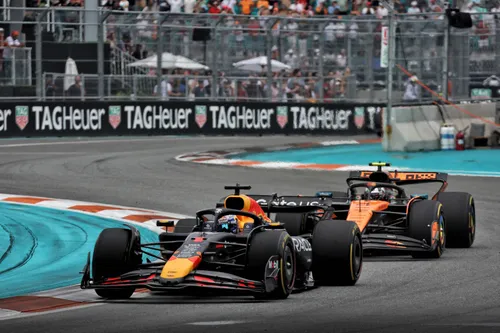
Verstappen battling with Norris during the first stint of the race
The scenario didn’t change neither during the second stint on the hards, with Verstappen finishing almost 40 seconds behind Piastri after starting on pole, on a track where the hot temperature and tyre wear played a crucial role with high fuel load.
The feeling is that the RB21 behaves very well on high-speed layouts like Jeddah and Suzuka, where the high-speed sections and the long straights make the car express its highest potential. Cold temperature is another favourable aspect for the car, as that prevents tyres from overheating, allowing Red Bull to battle McLaren on almost equal ground.
However, as soon as the F1 Circus moves to more “conventional” layouts, with a mix of different kind of corners and with hotter climate conditions (like seen in Shanghai or Miami), the RB21 exits its woking window, losing performance to the MCL39 as a direct consequence.
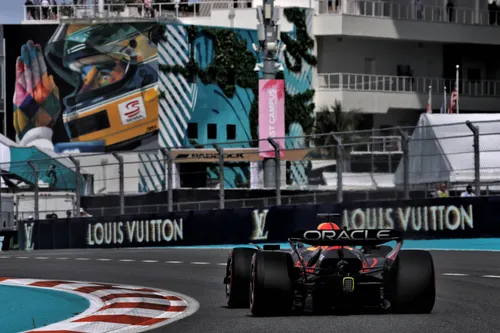
Verstappen during his qualifying lap in Q3
These two factors seem highly influent on the performance of the weekend, matched as well with the set-up issues the team always face on Friday, which are generally solved with work both at the factory and on track overnight.
For all these reasons, if Red Bull want to try and have a go at the Driver’s Championship, they “need to make less mistakes and we need to find more performance” as underlined by Verstappen in Miami, conscious that, performance wise, McLaren will probably have the quickest car until Abu Dhabi.
Read also
Read more about:
Popular on GPBlog
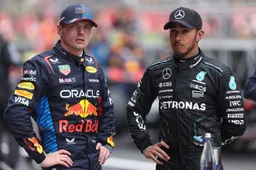
1
Verstappen opts for Hamilton's old race number for F1 2026
95616 times read
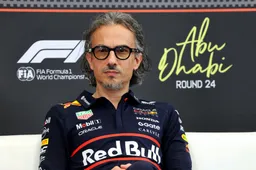
2
Red Bull Racing director steps down, only Mekies remains in charge
9094 times read
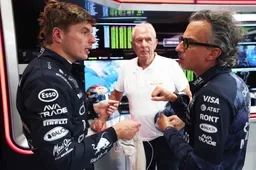
3
Red Bull confirms 'successor' to Marko within its successful Junior Team
2474 times read
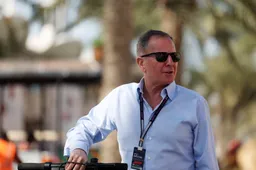
4
Martin Brundle reveals his pick for 2025’s finest F1 driver
1648 times read
Loading


